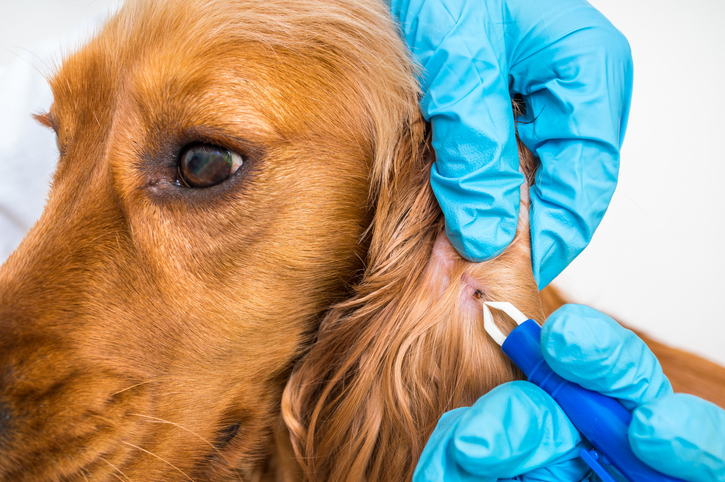When it comes to taking care of a senior dog, there are countless new considerations you need to make. On top of the regular responsibilities of owning a dog, looking after one that’s reaching its golden years can mean a whole new list of obstacles.
One of the most important things to consider when taking on this new challenge is your dog’s dental health. Although it might seem trivial when compared to diabetes, arthritis, organ issues, or any of the other countless health trials your dog may face, dental care is a crucial part of senior dog care and it can actually relate to lots of other common health issues. With proper care and consideration for your dog’s oral health, you’ll not only keep their teeth and mouth in the best possible health, but it can actually extend their life, and make things more comfortable for them overall.
Common Signs of Dental Issues in Senior Dogs
Before we look at the best practices for taking care of your dog’s dental health, let’s go over some of the biggest warning signs that your dog’s teeth and mouth need attention:
- Bad breath. Although a dog having bad breath is sometimes considered normal, it’s actually an indicator of poor oral health. Excessively bad breath on a regular basis is a sign of bacteria that is present in your dog’s mouth, which is commonly caused by infrequent brushing and oral cleaning.
- Plaque and tartar. Plaque, the sticky, bacteria-based substance that can build up on poorly-cleaned teeth, eventually hardens to become tartar, otherwise known as calculus.
- Plaque can be removed fairly easily with brushing, but once it becomes tartar, it’s much harder to remove.
- Neglecting to clean your dog’s teeth can lead to excess build-up of tartar, which can be observed as inflammation in the gums and teeth discoloration.
- Oftentimes, the full extent of tartar build-up and periodontal disease can’t be seen with just your eyes, and may only be visible via a dental x-ray.
- Changes in the way your dog eats. Another sign that your dog is experiencing dental issues could be changes in how they eat.
- A dog with sore teeth or other dental issues may eat more slowly than usual, or favor one side of their mouth when chewing their food.
- Dogs with sore mouths may just eat less overall, which is a clear sign of a major health issue in need of your attention.
- Recent lack of energy. Another more serious indicator of poor dental health in your senior dog could be a recent lack of general energy.
Now that you know what to be on the lookout for when it comes to your dog’s dental health, you should brush up on the best practices for actually keeping their teeth and mouth in the best possible shape.
Regular home brushing
Step number one for any dog owner is taking care of your dog’s teeth at home. This is not something to only take up after noticing a problem in your dog, much like how we don’t start to brush our teeth only when we discover we have a cavity. Ideally, your dog’s teeth should be brushed or wiped daily, or at the very least, two to three times a week.
Brushing is an important preemptive way to care for your dog’s teeth, and is a step you should be taking from day one of caring for your dog. However, it’s possibly even more important to be diligent about brushing for your senior dog.
Dental check-ups and cleanings
Beyond home dental care, it’s crucial to get your dog’s oral health examined routinely by your veterinary team. Frequency of comprehensive oral health treatment will depend on your pet’s individual oral environment. Annual oral examination along with a health check is imperative in order to keep an eye on any potential problems before they become more serious.
Bloodwork, X-rays, and other tests
When taking your senior dog in for dental cleanings and check-ups, there are other tests and measures to take that are a very important part of monitoring your dog’s oral health. Even if a dog’s teeth and gums look healthy to the naked eye, a dental x-ray, for instance, can reveal a myriad of other issues that otherwise wouldn’t be visible. Likewise, a blood analysis can be an invaluable tool to learn about your dog’s health, revealing elevated bacteria levels or other signs of infection.
Your veterinarian will be able to make the best recommendations to monitor your dog’s health, so always follow their advice when having your senior dog consulted.
Supplements to food and water
Another great way to care for your dog’s teeth at home is through special products specifically for dental health. There are lots of specially-formulated treats and chews that help reduce the build-up of plaque and tartar. These can be great for any dog, but especially for dogs that are resistant to brushing.
When looking for dental products for your pet – look for the VOHC seal on the product. This ensures that the veterinary oral health council has approved this product & that it does in fact help with plaque and tartar build up.
As you can see, dental health is a crucial but sometimes overlooked aspect of caring for a senior dog. However, with diligent home care such as brushing and dental treats, as well as regularly checking in with your dog’s veterinarian, you can keep a good handle on their dental care and ensure they’re as healthy and comfortable as possible in their golden years.
Did you miss part 1? Click here to read Senior Dog Care Part 1: General Care Tips.
Creative Commons Attribution: Permission is granted to repost this article in its entirety with credit to Hastings Veterinary Hospital and a clickable link back to this page.






